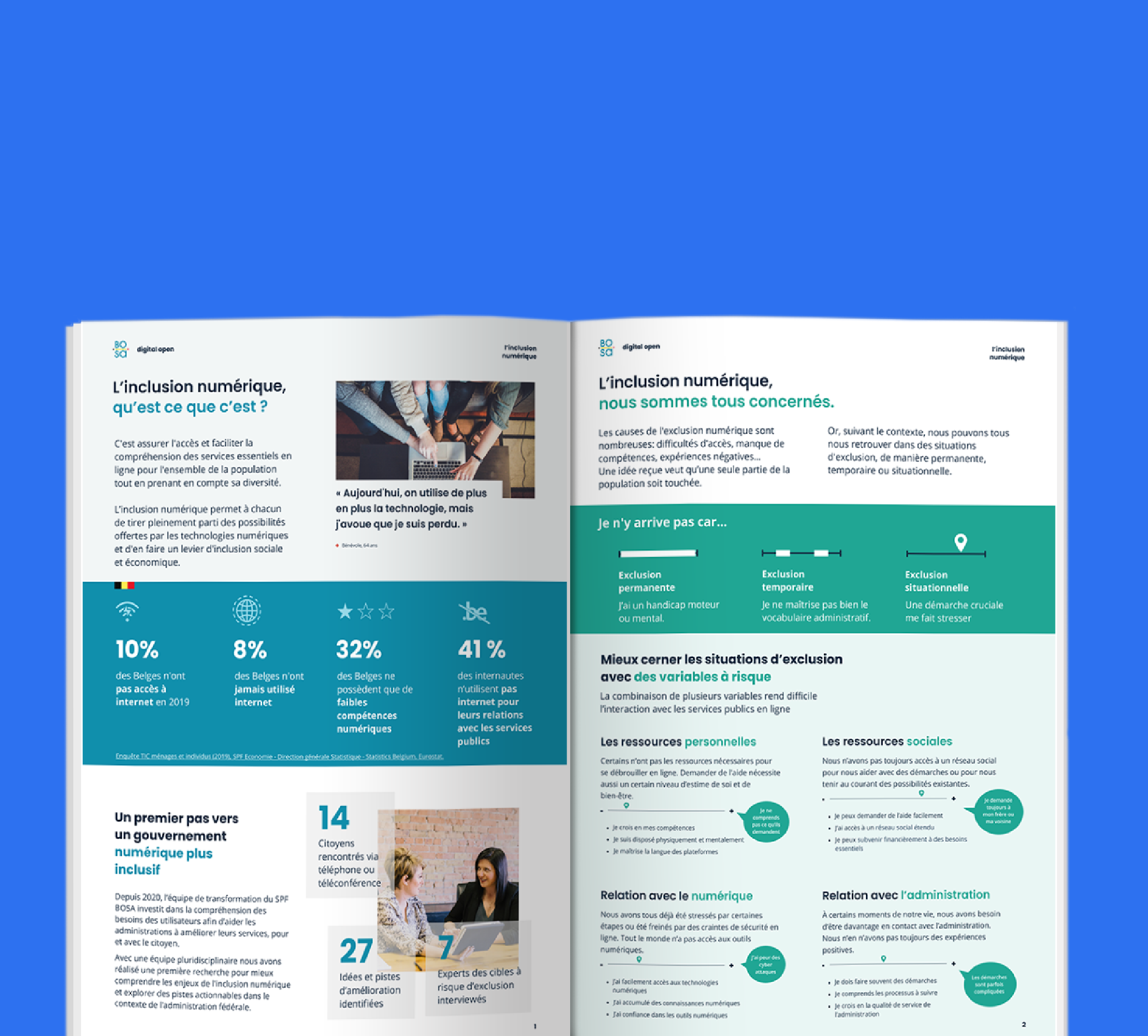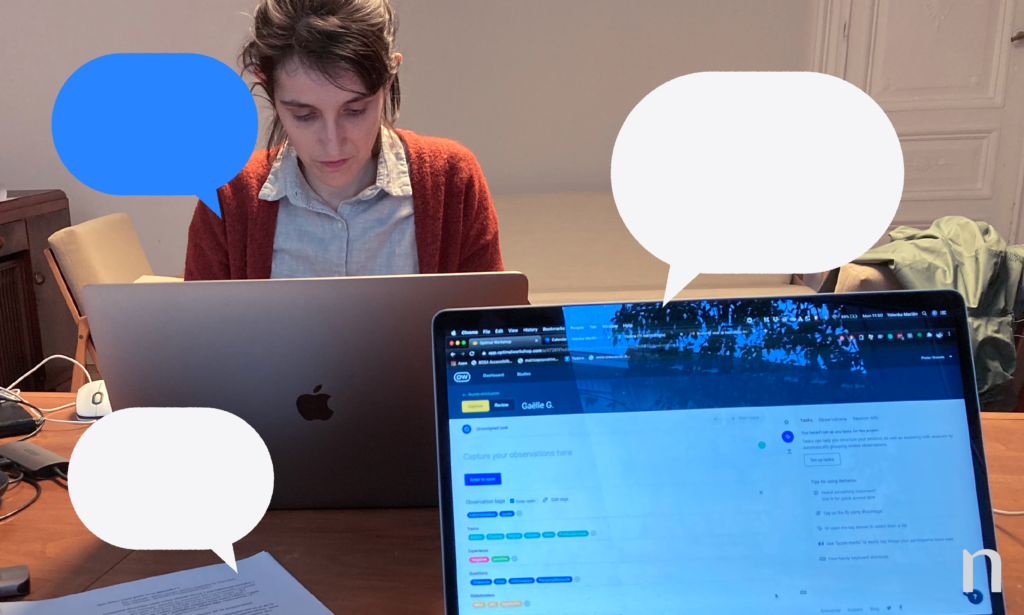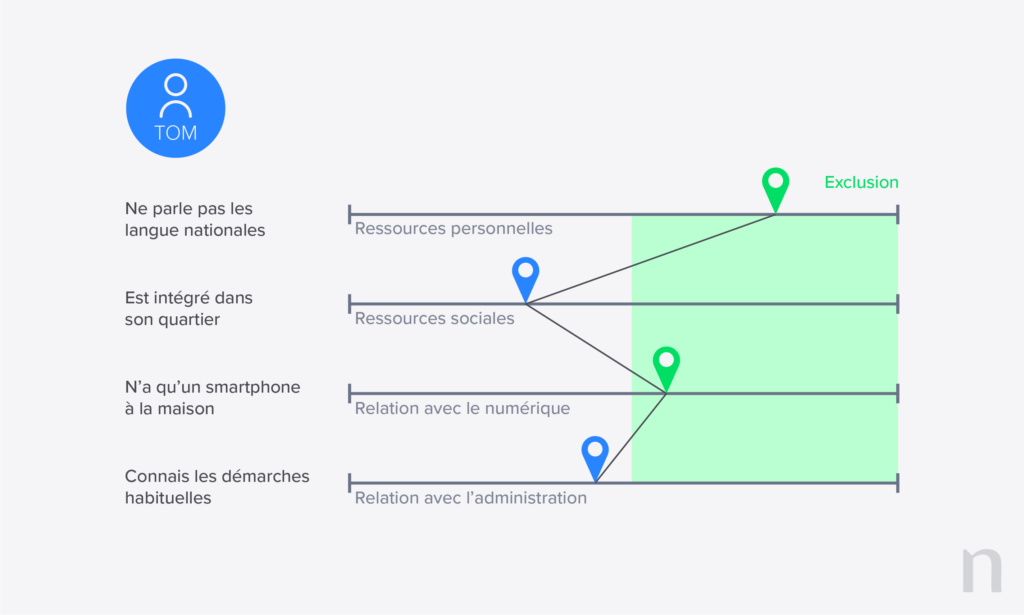BOSA
Enabling inclusion for the Belgian government’s digital platforms through human-centred design

The Digital Open project of the Belgian Government wants to share knowledge, experiences and tools to support and align a human-centered approach for the digital transformation process of all federal services. Namahn assisted their team in the research and sharing of know-how about what should be one of the cornerstones of any public online service: e-inclusion.
| Client | Sector | LAnguage | Team |
|---|---|---|---|
| Belgian Federal Government –BOSA | Public | French | 3 designers |
Sharing and aligning e-inclusion knowledge and practice
The team of the Digital Open project were already very aware of the fact that e-inclusion is a core element of the citizen-centric approach that they want to promote and support. They were aware, for example, that for some people, getting access to Wi-Fi or onto a public website, may already be a major hurdle. But they also knew they had to dig deeper into the topic itself and understand the real-life issues that citizens run into if they wanted to share know-how and tools to support other Belgian public services in this domain.
Because of our familiarity with the ecosystem of Belgian government services and past experiences with similar projects, Namahn was an obvious partner for this research project.
Understanding the e-inclusion target audience
From the start, it was clear that the main goal of this project was to get to a better understanding of who the digitally excluded citizens are, and to look at the causes and consequences of their exclusion. Because of the potentially large and diverse target audience, we started with a framing exercise to be able to adjust our approach to specific target groups, as well as to the COVID-situation.

We were able to increase and refine the team’s knowledge about e-inclusion by identifying the different stakeholders in the ecosystem: academics with a thorough knowledge of the reasons for exclusion, caregivers with a firsthand view on the most important challenges, and the end-users who could give us insight in their day-to-day context.
We worked out an interview guide in a workshop with the BOSA stakeholders and the product owners of different platforms (e-Box, MyMinFin and CSAM) to make sure that the research would answer their main questions and concerns. Next, we set up 14 qualitative interviews with end-users online (if familiar to them) or by phone. We also interviewed four experts who support end-users locally through social organisations.
Another challenge was to turn the insights that we had gathered into actionable recommendations for the different stakeholders, and see what this meant for their future strategy concerning digital inclusion.

From insights to actionable conclusions
During the preliminary research phase, we summarized existing know-how about e-inclusion and related tools that we gathered from our own experience, further study, and consulting with domain experts.
Next, we were able to increase knowledge about the target audience and gather insights in the challenges and opportunities for improving specific public services such as CSAM, e-Box, and MyMinFin.
To conclude the interviews, we were able to formulate concrete actions, both for the short and long term, together with a strategy for sharing the know-how.
Throughout 2021, Namahn is continuing its collaboration with BOSA on the subject of digital inclusion, as it remains a strategic priority of the DG Digital Transformation. You can explore all the recommendations on inclusive design in government on the Digital Open website in Dutch and in French.